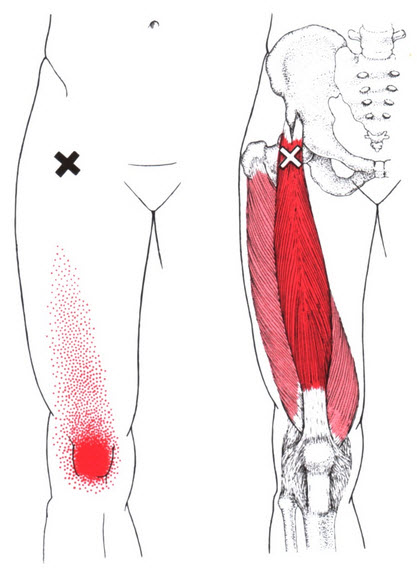Elite PT Newsletter May 2018 – Running Injuries Part 2 – Knee Pain

This month’s newsletter focus is on knee pain. Things have been getting busier here with summer just around the corner and lots of runners prepping for races.
One thing we’ve definitely noticed with our runners is that prevention is key. They’re coming in sooner, once they can tell something is not quite right, rather than waiting weeks or months for it to just go away on its own. Because of that we’ve seen two trends:
1) They are recovering much quicker than in the past
2) They’re completing their races – most we’ve checked in on have run faster than in previous races.
So on that note let’s continue with our series on running injuries – this month focusing on knee injuries.
***Just a quick note for you non-runners out there – these injuries are very common in all sports and even in non-athletes so if you have knee pain you will still want to check this out!
The most common knee injuries in runners are:
1) Patello Femoral Pain (front of the knee)
2) Distal IT Band Syndrome, a.k.a. Runners Knee (outside of the knee)
3) Patellar Tendinosis (just below the knee cap)
Last month we talked about improving mobility and stability of the foot and ankle – which will also help to relieve strain on the knee joints so if you have knee pain go back and read that article here: https://elitepttc.comelite-pt-newsletter-april-2018-common-running-injuries-part-i-foot-and-ankle/
This month I want to focus on a couple of the muscles that are notorious for causing knee pain, and what you can do about them. Check out the pictures below:
Rectus Femoris Trigger Points and Pain Referral Pattern

Vastus Lateralis Trigger Points and Pain Referral Pattern

The ‘X’ is the location of common trigger points (tight irritable bands of muscle) and the reddened area is that trigger point’s pain referral pattern. From the pictures you can see how irritation within the big quadricep muscles can cause pain all the way down to the knee.
The quadricep group frequently gets overworked with running which can cause these hyper-irritable bands of tissue in the first place. As a result the muscle tissues feel tighter and become less flexible. This creates a vicious cycle over time and ultimately these tissues can refer pain down to the front or side of the knee mimicking the conditions I listed above.
Luckily these trigger points are usually easy to identify and treat with manual therapy techniques such as Graston Technique and Dry Needling. Following up with corrective exercises can ensure that these irritable areas don’t flare back up after being treated. On top of that, most of our clients can manage this in the future doing their own soft tissue work using foam rollers and massage sticks, and warming up properly.
Check out the video below if you’d like to see how we dry needle and treat that outer thigh muscle:
***This video was originally created for physical therapists and posted on SportsRehabExpert.com so there is quite a bit of medical lingo but you’ll get the drift. Be sure to check out how much better Lydia’s leg moves after the treatment.
Last year one of our Kingsley athletes was diagnosed with IT Band Syndrome and was experiencing significant pain on the outside of the knee. His knee had actually buckled on a number of occasions while trying to sprint.
He presented with almost identical range of motion at the hip as Lydia in the video above. One treatment of dry needling followed by a couple corrective exercises and he was able to return to running the next day without pain.
I can’t guarantee it will always work that fast but sometimes it does (helps to be 16 too!)
SPECIAL OFFER – if you’ve been struggling with knee pain and you’re not sure what to do about it then give us a call for a free screening. We can quickly identify the cause of the problem and guide you down the right treatment path. 231 421-5805.
Until next time…
Joe Heiler PT
Joe@elitepttc.com
231 421-5805
